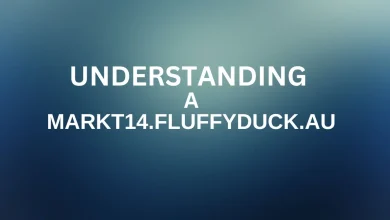Official as a Body of Fiction: How Facts and Fiction Blur in Journalism

Journalism is a field that often balances on the fine line between fact and fiction. This is particularly evident in certain storytelling approaches where creative liberties are taken to communicate a larger truth or perspective. One such approach is “official as a body of fiction,” a term that has garnered attention for its use in narratives and storytelling.
The New York Times (NYT), known for its journalistic integrity and storytelling prowess, has often been associated with this method. In this article, we will explore what “official as a body of fiction” means, its implications in journalism, and how it relates to the New York Times.
What Does “Official as a Body of Fiction” Mean?
The phrase “official as a body of fiction” suggests that the line between official narratives or statements and fictional elements can sometimes blur. In journalism, this means that some stories or reports may have elements that are not strictly factual but are presented in a way that feels true or conveys a deeper reality.
This technique is often used to highlight social issues, provide critique, or offer a perspective that might not be captured through traditional reporting methods. By blending elements of fact and fiction, writers can create a narrative that resonates more deeply with readers, making the content more engaging and thought-provoking.
How Is This Concept Used in Journalism?
In journalism, “official as a body of fiction” is used to tell stories that might not fit neatly into a factual report. It allows journalists to explore the “what ifs” and “maybes” of a situation, offering readers a different perspective on current events or social issues.
For example, a journalist might write a story that imagines a future based on current trends or policies, using a mix of factual data and creative speculation. This method can provide a powerful way to convey potential outcomes or highlight concerns that may not be immediately apparent.
| Pros | Cons |
|---|---|
| Engages readers with creative storytelling | May confuse readers about what is fact and what is fiction |
| Highlights issues in a compelling way | Risks credibility if not clearly labeled as fictional |
| Offers a different perspective | Can be seen as manipulative or misleading |
Why Do Writers Use This Technique?
Writers and journalists use the “official as a body of fiction” technique for several reasons. One of the main reasons is to engage readers in a way that pure facts cannot. Facts are important, but they don’t always capture the emotional or human side of a story.
By incorporating fictional elements, writers can create a more compelling narrative that resonates emotionally with the audience. This technique can also be used to challenge the audience’s perception of reality, encouraging them to think critically about the information they consume and the sources they trust.
The Role of the New York Times in Shaping This Narrative
The New York Times has long been a leader in journalism, known for its thorough reporting and dedication to truth. However, it has also embraced creative storytelling techniques to provide deeper insights into complex issues.
The NYT has published articles and opinion pieces that employ a narrative style blending fact with creative fiction to highlight issues in unique and engaging ways. This approach has been both praised for its innovation and critiqued for potentially blurring the lines between news and fiction. The phrase “official as a body of fiction” is often associated with the NYT because of its willingness to explore these unconventional storytelling methods.
Examples of “Official as a Body of Fiction” in NYT
One notable example of the NYT using “official as a body of fiction” is its investigative pieces that include narrative storytelling. These articles might start with a hypothetical scenario that is fiction but grounded in facts, leading into a discussion of real-world implications.
For instance, a story might open with a fictional character experiencing a future climate disaster based on current scientific data, which then leads into a factual discussion about climate change. This method hooks readers with a narrative while educating them on the underlying facts.
Is This Approach Beneficial or Misleading?
There is ongoing debate about whether the “official as a body of fiction” approach is beneficial or misleading in journalism. On one hand, it can make complex or dry topics more accessible and engaging, drawing in readers who might not otherwise be interested.
It can also highlight issues in a way that straight facts cannot, providing a more nuanced understanding of a topic. On the other hand, there is a risk that readers may not understand what is fiction and what is fact, potentially leading to misinformation. This risk is particularly high if the fictional elements are not clearly labeled or if readers are not familiar with this style of journalism.
How Do Readers Perceive This Style of Journalism?
Reader perception of this style of journalism can vary widely. Some readers appreciate the creativity and emotional engagement that comes with a blend of fact and fiction, finding it to be a refreshing change from traditional reporting.
Others, however, may feel misled or confused if the distinctions between fact and fiction are not clear. This is why transparency is key when using this approach. Clearly labeling fictional elements and providing context can help readers understand the intent behind the story and prevent confusion.
How Does This Impact Journalistic Credibility?
The impact on journalistic credibility depends largely on how well the “official as a body of fiction” technique is executed. When done transparently and with clear intent, it can enhance credibility by showing a commitment to exploring multiple facets of an issue.
However, if the line between fact and fiction is too blurred or if the intent is not clear, it can harm credibility. Readers rely on journalists to provide accurate and truthful information, and any perceived manipulation can damage trust.
Can “Official as a Body of Fiction” Be Considered Ethical?
The ethical considerations of using “official as a body of fiction” in journalism are complex. Ethical journalism is based on truthfulness, fairness, and transparency. If a journalist uses fiction to deceive or mislead, it is clearly unethical.
However, if the fictional elements are used transparently and with the intention of enhancing understanding or sparking discussion, it may be considered ethical. Ultimately, the ethics of this approach depend on the intent behind it and the clarity with which it is presented to the reader.
Conclusion: The Future of “Official as a Body of Fiction” in Journalism
The use of “official as a body of fiction” in journalism is likely to continue evolving as writers and media outlets seek new ways to engage audiences and convey complex truths. While this technique has its benefits, including making stories more engaging and highlighting important issues, it also comes with risks, particularly around reader understanding and journalistic credibility.
As such, it is crucial for journalists and media organizations like the New York Times to use this approach judiciously, ensuring that the line between fact and fiction remains clear and that readers are not misled. By doing so, they can maintain the trust of their audience while continuing to push the boundaries of storytelling in journalism.




